API Rest with Laravel 5.6 Passport Authentication — Reset Password (Part 4)
https://medium.com/modulr/api-rest-with-laravel-5-6-passport-authentication-reset-password-part-4-50d27455dcca
API Rest with Laravel 5.6 Passport Authentication — Reset Password (Part 4)
 Alfredo BarronFollowAug 2, 2018 · 6 min read
Alfredo BarronFollowAug 2, 2018 · 6 min read
We will learn to create a password reset system![]()
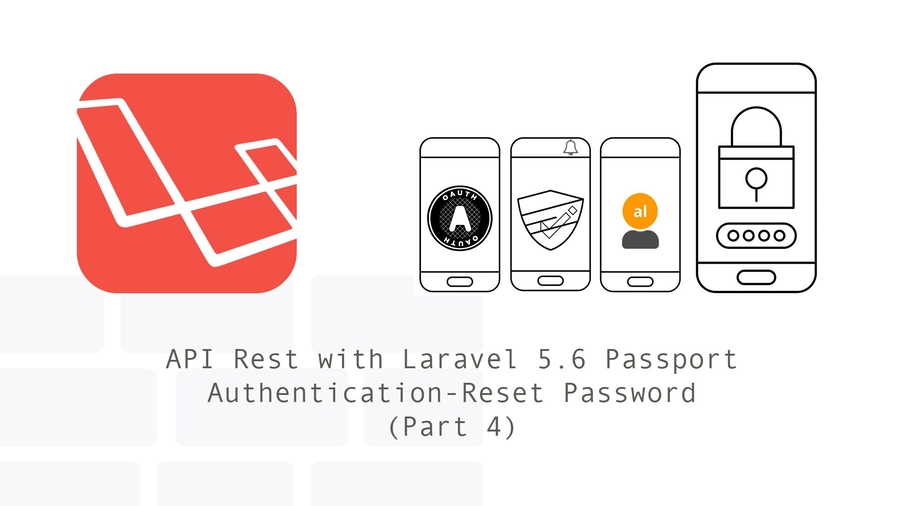 https://www.vecteezy.com
https://www.vecteezy.com
Step 1. Update migration
php artisan make:model PasswordReset -mIn first step, we require to update the migration file database/migrations/xxx_create_password_resets_table.php like bellow code:
public function up()
{
Schema::create('password_resets', function (Blueprint $table) {
$table->increments('id');
$table->string('email')->index();
$table->string('token');
$table->timestamps();
});
}Step 2. Create PasswordReset model
Open your terminal or command prompt and run bellow command:
This command will create app/PasswordReset.php file, in this file set fillable inputs.
Step 3. Create Notifications
We create two notifications PaswordResetRequest and PasswordResetSuccess, in your terminal or command prompt run bellow commands:
This command will create app/Notifications/PasswordResetRequest.php and app/Notifications/PasswordResetSuccess.php files.
In the PasswordResetRequest.php file add the next code:
In the PasswordResetSuccess.php file add the next code:
Step 4. Create API Routes
We will create api routes. Laravel provide routes/api.php file for write web services route. So, let’s add new route on that file.
Step 5: Install Dependencies
We use Carbon package to help with dates, in your terminal run bellow command:
Step 6: Create Controller
In this step we have to create new controller and three api method. So let’s create PasswordResetController and put bellow code:
Now we are ready to run our example so run bellow command to quick run:
Tests
Now, we can simple test by rest client tools (Postman), So I test it and you can see below screenshots.
In this api you have to set two header as listed below:
Request Password Reset![]()
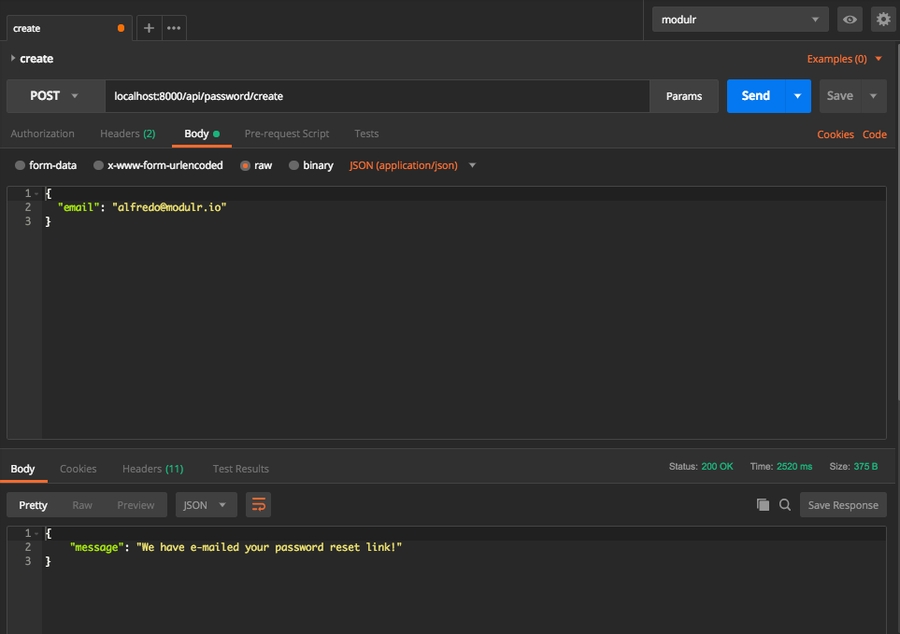
When request password reset will created token in data base![]()

When request password reset will receive a email with the link to Reset Password.![]()

Find Password Reset
If the token is active response with token data![]()
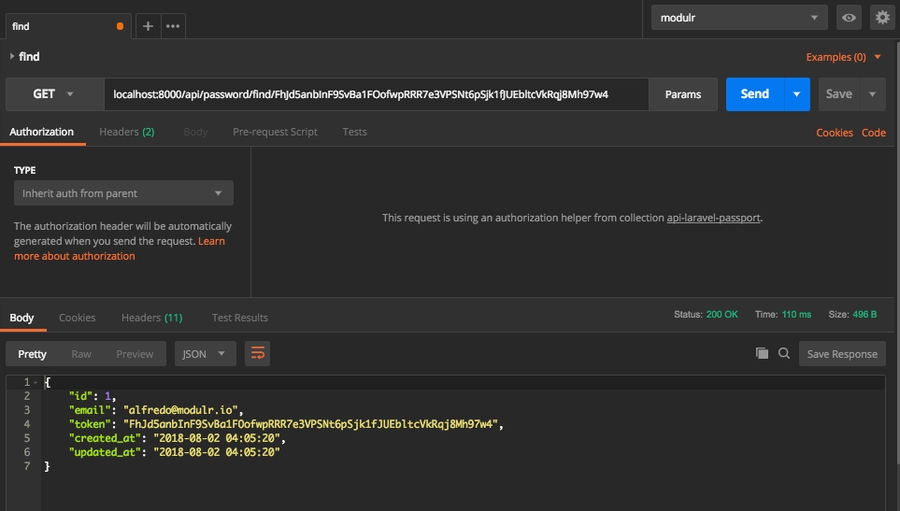
If the token is not active the response is a 404 error![]()
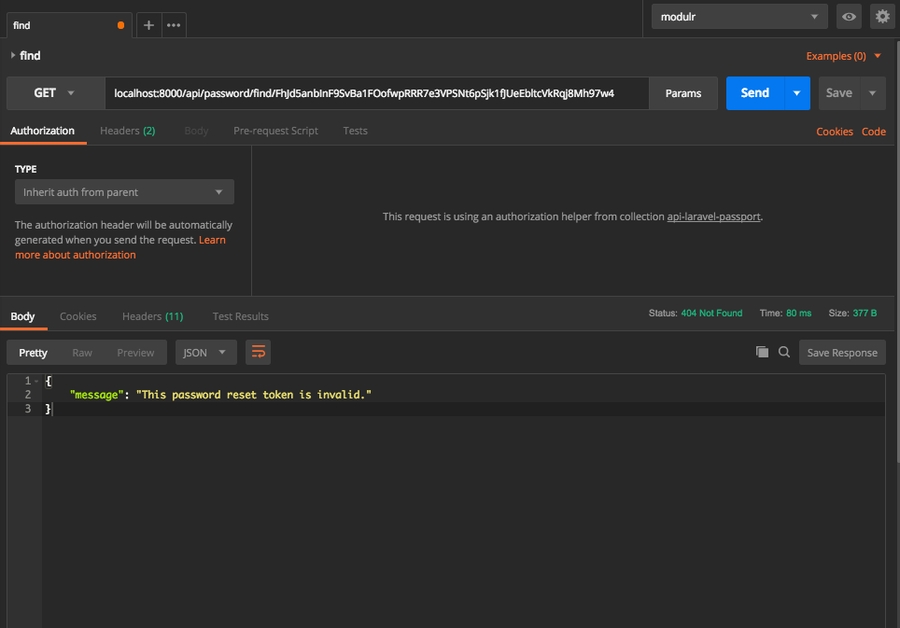
Reset Password
If the token is active response with User data![]()

If the token is not active the response is a 404 error![]()
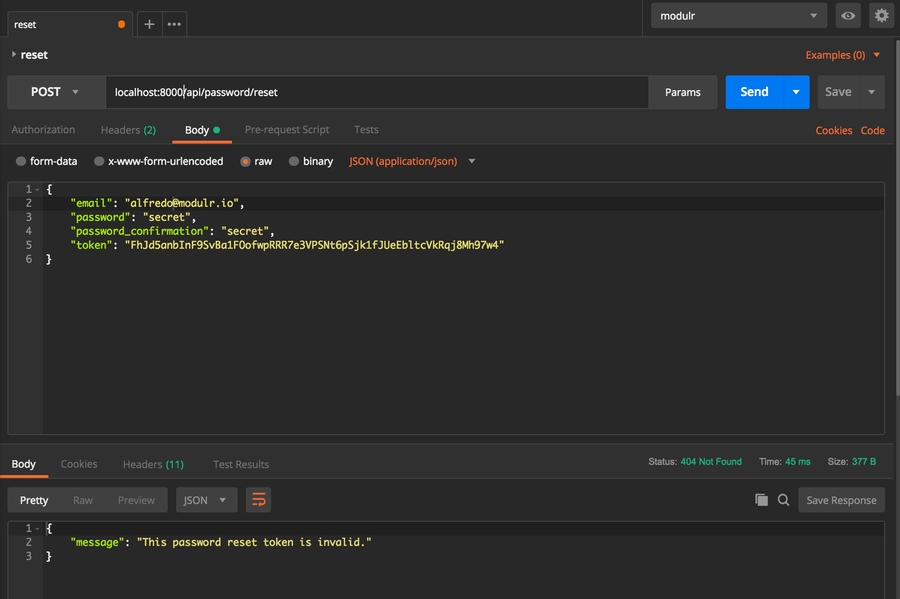
Thanks for reading! I’m Alfredo Barrón, Feel free to connect with me via Twitter.
Part 1. Passport Authentication Part 2. Confirm account + notifications Part 3. Generate avatar Part 4. Reset Password Part 5. Send Notifications with Queues on Redis
Resources
Last updated
Was this helpful?